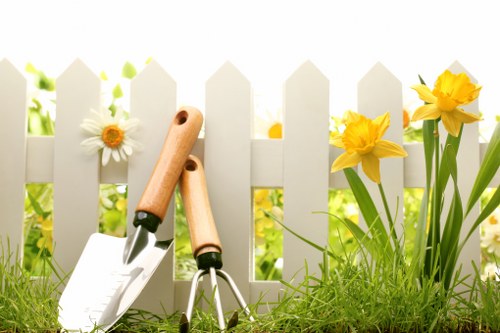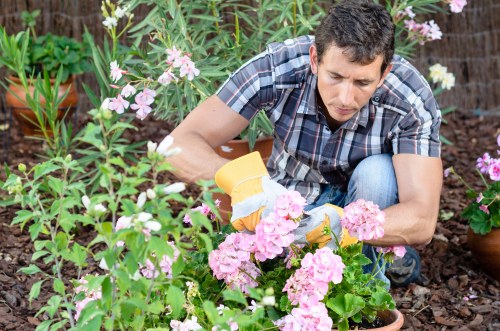Mastering Hedge Trimming in Poplar: Techniques and Tips for a Lush Landscape
Introduction to Hedge Trimming in Poplar

Maintaining a healthy and aesthetically pleasing poplar hedge requires regular hedge trimming. Poplar trees are known for their rapid growth and tall stature, making proper pruning essential to control their shape and size. Whether you're a homeowner looking to enhance your garden or a professional landscaper aiming to provide top-notch services, understanding the nuances of hedge trimming in poplar trees is crucial.
Proper hedge trimming not only promotes the health of poplar trees but also ensures they serve their purpose as effective privacy screens or decorative elements in your outdoor space. This article delves into the techniques, tools, and best practices for trimming poplar hedges, ensuring they remain vibrant and well-maintained throughout the year.
In the following sections, we'll explore the ideal timing for trimming, the tools you'll need, step-by-step trimming methods, and how to address common issues that may arise during the hedge trimming process.
The Importance of Timely Hedge Trimming

Timing is a critical factor in hedge trimming. For poplar trees, the best time to trim is during late winter or early spring before new growth begins. This ensures that any cuts made will encourage healthy new shoots and maintain the desired shape of the hedge.
Trimming during the dormant season minimizes stress on the trees and reduces the risk of disease transmission. Additionally, avoiding the peak growing season helps prevent excessive sap loss and promotes faster healing of the pruning cuts.
It's also important to consider the specific variety of poplar you are trimming, as different species may have varying growth rates and pruning requirements. Consulting with a local arborist can provide guidance tailored to your specific poplar hedge.
Essential Tools for Effective Hedge Trimming

Equipping yourself with the right tools is fundamental to achieving precise and efficient hedge trimming. For poplar trees, which can grow rapidly and develop dense foliage, having sharp and sturdy tools will make the trimming process smoother and more effective.
- Pruning Shears: Ideal for small branches and detailed shaping.
- Electric or Gas-Powered Hedge Trimmers: Suitable for larger hedges, providing efficiency and consistency.
- Loppers: Necessary for thicker branches that are beyond the capacity of standard shears.
- Safety Gear: Including gloves, safety goggles, and ear protection to ensure personal safety during trimming.
- Protective Netting: To catch debris and maintain a clean workspace.
Regular maintenance of these tools, such as sharpening blades and ensuring proper fuel levels for gas-powered equipment, will enhance their performance and longevity, making your hedge trimming tasks more manageable.
Step-by-Step Guide to Trimming Poplar Hedges

Executing a successful hedge trimming involves several careful steps to ensure the health and appearance of your poplar trees. Here’s a comprehensive guide to help you through the process:
- Assess the Hedge: Examine the current state of your poplar hedge, identifying any dead or diseased branches that need removal.
- Plan the Shape: Decide on the desired shape and height, considering factors like sunlight, growth patterns, and aesthetic preferences.
- Gather Your Tools: Ensure all necessary tools are clean, sharp, and in good working condition.
- Start Trimming: Begin by cutting away any unwanted branches, working from the outside in to maintain an even shape.
- Maintain Consistent Height: Use a measuring tape or marker to ensure uniformity across the entire hedge.
- Clean Up: Remove all trimmed debris to prevent disease spread and maintain a tidy appearance.
Following these steps methodically will help you achieve a well-manicured poplar hedge that enhances the beauty and functionality of your landscape.
Common Challenges in Hedge Trimming Poplar Trees

While hedge trimming is essential for maintaining poplar trees, several challenges can arise during the process. Addressing these issues promptly ensures the long-term health and aesthetics of your hedges.
Pest Infestations
Poplar trees can be susceptible to various pests that may damage the foliage and branches. Regular inspection during trimming allows for early detection and management of infestations, preventing extensive harm.
Inadequate Pruning Techniques
Improper trimming methods can lead to uneven growth, weak branches, and increased vulnerability to diseases. It's crucial to use correct techniques and tools to avoid causing stress to the trees.
Tool Maintenance
Using dull or poorly maintained tools can result in jagged cuts that take longer to heal, making the trees more susceptible to infections. Regularly sharpening and cleaning your tools is essential for effective and safe trimming.
By understanding and mitigating these challenges, you can ensure that your hedge trimming efforts yield healthy and visually appealing poplar hedges.
Best Practices for Sustainable Hedge Trimming
Adopting sustainable practices in hedge trimming not only benefits your poplar trees but also contributes to environmental conservation. Here are some best practices to follow:
- Prune Responsibly: Avoid over-trimming, which can stress the trees and hinder their growth.
- Use Eco-Friendly Tools: Opt for electric or battery-powered trimmers over gas-powered ones to reduce carbon emissions.
- Recycle Green Waste: Compost the trimmed branches and leaves instead of discarding them in landfills.
- Promote Biodiversity: Maintain natural habitats around your hedgerows by leaving some branches untrimmed for wildlife.
- Water Conservation: Ensure proper watering practices to support the trees' health without wasting water.
Implementing these sustainable practices ensures that your hedge trimming activities are environmentally friendly and contribute to the long-term vitality of your poplar hedges.
When to Seek Professional Hedge Trimming Services
While DIY hedge trimming can be rewarding, certain situations call for professional expertise. Consider hiring a professional landscaper or arborist if you encounter the following:
- Large or Tall Hedges: When dealing with extensive or high hedges, professionals have the equipment and experience to manage the task safely.
- Health Issues: If your poplar trees show signs of disease or pest infestations, a professional can provide appropriate treatments and care.
- Complex Shapes: Achieving intricate or specific hedge shapes requires skill and precision, which professionals can expertly deliver.
- Time Constraints: Busy schedules may make it challenging to devote time to regular trimming, making professional services a convenient option.
Don’t hesitate to contact us today if you need expert assistance with your poplar hedge trimming needs. Our skilled team ensures your hedges are maintained to the highest standards.
Conclusion: Achieving Beautiful Poplar Hedges Through Proper Trimming
Effective hedge trimming in poplar trees is a blend of knowledge, skill, and the right tools. By understanding the best practices and addressing common challenges, you can cultivate healthy, attractive hedges that enhance your landscape.
Whether you choose to undertake the trimming yourself or seek professional help, prioritizing the health and shape of your poplar hedges will yield lasting beauty and functionality. Remember, regular maintenance is key to ensuring your hedges remain a vibrant and integral part of your outdoor space.
Ready to transform your garden with expertly trimmed poplar hedges? Book your service now and let our professionals help you achieve the perfect landscape.
